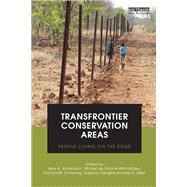Transfrontier Conservation Areas
, by Jens A. Andersson, Michel de Garine-Wichatitsky, David H.M. Cumming, Vupenyu Dzingirai and Ken E. Gi- ISBN: 9781849777247 | 1849777241
- Cover: Nonspecific Binding
- Copyright: 7/14/2017
The introduction of transfrontier conservation areas (TFCAs) in southern Africa was based on an enchanting promise: simultaneously contributing to global biodiversity conservation, regional peace and integration, and the sustainable socio-economic development of African communities. Cross-border collaboration and ecotourism became seen as the vehicles of this promise, which would enhance regional peace and stability along the way. However, as these highly political projects take shape, conservation and development policy making progressively shifts from the national to regional and global arenas, and the peoples most affected by TFCA formation tend to disappear from view. This book focuses on the forgotten people displaced by, or living on the edge of these protected wildlife areas. It moves beyond the grand 'enchanting promise' of conservation and development across frontiers, and ill-conceived notions of TFCAs and/or transfrontier parks as unified socio-ecological systems. Peoples' dependency on natural resources - the specific combination of crop cultivation, livestock keeping and resource harvesting activities - varies enormously along the conservation frontier, as does their reliance on resources on the other side of the conservation boundary. Hence, the studies in this book move from the dream of ecotourism-fuelled development supporting nature conservation, towards the local realities of marginalized people in marginal environments on the edge of national parks and protected areas.






